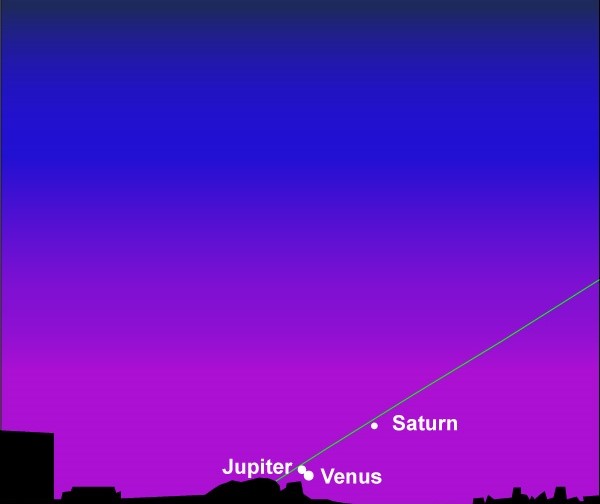Among the astronomical events that took place in 2020 were the spectacular streak of Comet Neowise, the total solar eclipse, and Jupiter’s close encounter with Saturn. As a result of the pandemic, the old sky-watching parties had to give way to solo viewings from backyards. Many of this year’s impressive views will also need socially distant nights, which will provide plenty of other chances for fantastic views. Find a remote location where there are no city lights – state and federal parks are usually the best choice – or switch out your backyard light bulbs for red ones so you can adjust your eyes to the night sky better.

Despite the fact that it is now 2021, the pandemic continues to spread. There are fewer social gatherings and fewer leisurely activities, as in many cases social gatherings were put on hold. A number of mesmerizing spectacles will unfold during the upcoming year, which should allow you to enjoy the night sky to the fullest.
There are a number of stunning opportunities to watch outer-space events all over the world, even if certain events are best viewed from certain states. If you’re an astronomy fanatic or a novice, here are ten celestial events to look out for from North America.
1. A planetary trio forms from January 8 to 11
During the first four nights of January, Mercury, Jupiter and Saturn will be very close together in the western sky. According to EarthSky, the last time three planets appeared near one another was in October 2015, when Venus, Jupiter, and Mars arranged themselves opposite one another.

Astronomers who wish to see the planetary trio in North America should look at dusk, 45 minutes after sunset, when the sun has already set. According to EarthSky, the brightest planet of the three will be Jupiter-but you might have to use binoculars to find the other two from the afterglow of the setting sun. You’ll have the best chance of spotting this unusual triple if you choose a place where you can see the horizon unobstructed.
2. Conjunction of Venus and Jupiter on February 11

You will likely catch a clear view of Jupiter and Venus if you look to the southeast horizon about 20 to 30 minutes before sunrise. The planets appear as bright dots closest to one another if viewed only with the naked eye. Joe Rao reported for Space.com last year that the planets only appear to touch. The gas giant Jupiter is nearly 558 million miles away from Earth, and Venus lies just 73 million miles from the earth.
3. Lyrid meteor shower, April 21 to 22
From April 16 until April 30, the Lyrid meteor shower can be seen best from the north hemisphere, the American Meteor Society says. The peak night of April 21 and 22 will feature a 68 percent-full moon that will set around 4 a.m. EST. According to the Griffith Observatory in California, if you’re willing to stay up and wake up during those early morning hours when the moon has set, you’ll have a good chance of seeing peak meteor activity.

These annual showers originate in the constellation Lyra from a dust trail left by comet C/1861 G1 Thatcher. Vega, the brightest star in the constellation, is the blue-white star viewers should look for to take in the show. In addition to being the oldest meteor shower ever recorded by humans, the Lyrids are also the oldest meteor showers to be detected by Chinese astronomers: the first observation dates back to 687 B.C.
4. Total Lunar Eclipse on May 26
A total lunar eclipse will engulf the full moon for the first time since January 2019. On May 26, most of the United States will see a partial eclipse, which is a gradual darkening of the moon’s surface as Earth’s shadow slowly drifts across it. Light waves from the sun will scatter around the edges of Earth, causing the moon to turn a bright orange-red. The phenomenon has earned the name “blood moon” due to its colorful appearance.

Most viewers across the country will view the partial eclipse between 4:44 and 5:44 a.m. EST. It will begin at 3:11 a.m. in California for those who will be lucky enough to see it. National Geographic says Pacific time.
5. Annular Solar Eclipse on June 10
Astronomy enthusiasts will be treated two weeks after the “blood moon” to a spectacular annular solar eclipse in Canada, Greenland, and Russia. In contrast to total eclipse, where the moon blocks the sun’s rays completely, annular eclipses create a ring, or “ring of fire”, surrounding the moon’s shadow. On Nov. 4, northern Canada will witness a total annular eclipse beginning at 9:49 CUT. The same morning, approximately 5 to 6 a.m. after sunrise. A partial solar eclipse will be visible in the Eastern United States and the Midwestern United States at midnight Eastern time.

It’s important to remember that human eyes stay incredibly bright during a partial eclipse, according to NASA. Avoid looking directly at the event and use special solar filters. The American Optometric Association warns that even eclipse watching through sunglasses, binoculars, or unfiltered telescopes can damage your eyes.
6. On August 2, Saturn will be in opposition to the Sun
The Earth forms the center of a straight line when a planet is at opposition with the Earth and the sun. According to the Royal Observatory in London, opposition presents the best chance to view the far-away planets Jupiter, Uranus, and Neptune since these planets are highly visible and brightly illuminated.

Saturn is approaching opposition on August 2, so this will surely be true for the planet. In real time, viewers will be able to explore the planet’s rings and dozens of moons through telescopes as the gas giant nears Earth for the first time all year.
7. The Perseid meteor shower will occur August 11th to 12th
Perseids should provide excellent stargazing conditions thanks to a sliver, waxing moon and warm summer temperatures. A Perseid eclipse is a long and brilliant display of light and color caused by cometary material that is larger than average. As comet 109P/Swift-Tuttle orbits the sun, it leaves a dusty debris trail that passes through the Earth every year. As the debris interacts with the Earth’s atmosphere, it burns brightly and creates a fiery streak in the night sky.

On the peak night of August 11 to 12th, the Griffith Observatory reports that viewers can see 83 meteors per hour in dark sky areas. Those looking up after midnight during those weeks stand a good chance of seeing the meteor shower that occurs annually from July 14 to August 24. Look for Perseus in the sky to see meteors emitted from there.
8. Neptune in opposition on September 14

This icy giant orbits our sun at the greatest distance and is the only planet not visible from Earth. As per Sky and Telescope, it is rare to see the blue-hued planet with only a pair of binoculars and a steady hand in mid-September. As of September 14, Neptune will be shining brightest in our night sky, opposing the sun. To find the elusive planet, be sure to keep your gaze focused on the constellation Aquarius, then lower your gaze down towards Phi Aquarii, which appears to sit next to Neptune. It can be challenging to pick out the stars without a sky chart or one of many trustworthy stargazing mobile apps, but viewers can simplify the task by using a star chart or one of the many reliable stargazing mobile apps.
9. Eclipse of the moon on November 19

As predicted by NASA, the Earth’s shadow will cover nearly all of the moon’s surface during a lunar eclipse this month. Viewers across the United States will be able to witness the greatest eclipse in the early morning hours of the 19th. Taking place between 2:18 and 3:30 a.m. Stargazers can view the moon’s shadow cross its surface at 4 a.m. Eastern time, when the diameter of the shadow is the greatest. EST.
10. Geminid Meteor Shower, December 13 to 14
A bright moon will hamper the Geminids in 2021, which is usually one of the most powerful celestial displays of the year. As it gets closer to becoming a full moon on December 19, the moon will be in its “waning gibbous” phase. On the morning of December 14, after the moon has set, viewers should aim to view the night sky during the dark hours before dawn. According to the Griffith Observatory, 150 meteors may illuminate the sky.

In 1983, an asteroid named 3200 Phaethon produced this shower of green fireballs. Asteroid dust enters our atmosphere as the Earth moves through its path, resulting in a spectacular light show for observers on Earth. As comets are normally responsible for meteor showers, NASA has deemed the Geminids’ parent object to be a mystery.
Astronomical events such as these, should never be missed.
Space is a major topic of discussion today. The future of space exploration is an exciting one and it’s all thanks to advancements in technology. As the possibilities grow, so do the interests of many people in space. It has been more than 20 years since humans first stepped foot on the moon and even more time since the first satellites were launched into orbit. For those who have no interest in space, they might still be curious to know what is happening in space today. This blog has provided a list of the top ten events that are going to happen in 2021 that will take place in space.




